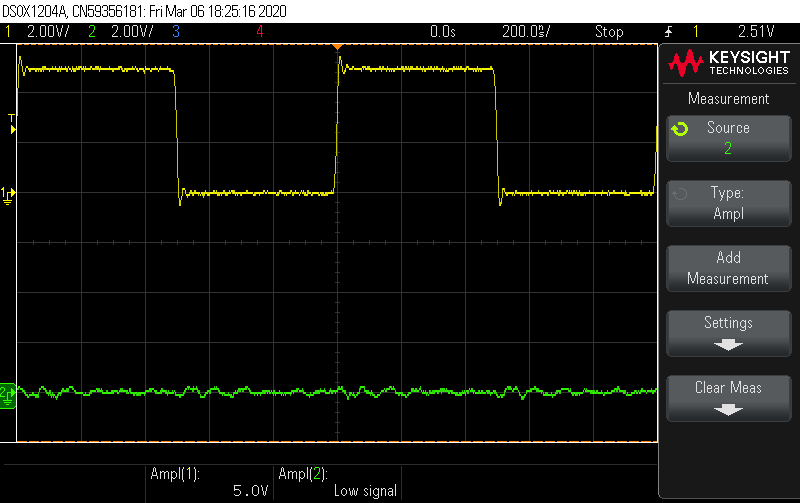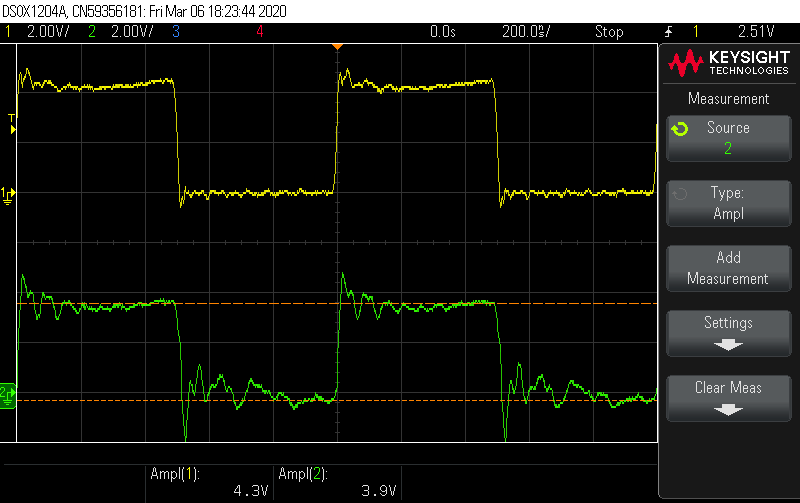Please tell us the cause of the power supply potential rise.
An experiment was performed using 74AHC245 under the following conditions.
VCC = DIR = 3.3V.
/ OE = 0V.
A1 = 5V.
The stabilized power supply used for the IC power supply is PMM25-1TR manufactured by KIKUSUI ELECTRONICS CORPORATION.
Here, a part of the instruction manual of the used stabilized power supply device is described.
"This product cannot sink reverse current from the load. If a load that regenerates power to the power supply is connected, the output voltage will increase and the output will not be stabilized."
As an experimental result, a waveform before applying a 5V voltage to A1 is shown in FIG. 1, and a waveform when a 5V voltage is applied is shown in FIG. 2 (ch1: A1 terminal, ch2: B1 terminal).
Figure 1 Waveform before applying 5V voltage to A1(2.0V/division)
Figure 2 Waveform when 5V voltage is applied to A1(2.0V/division)
As shown in FIG. 2, the input voltage dropped from 5 V to 4.3 V, and the output voltage also rose from 3.3 V to 3.9 V. The power supply voltage also increased from 3.3V to about 4V. The current supplied to the IC changed from about 1 mA before input to minus 2.25 mA after input, and became a reverse current.
The 74AHC245 has an input tolerant, and the circuit shown in Fig. 3 is introduced in the catalog of the AHC series of TI.
Figure 3 Excerpt from Advanced High-Speed CMOS (AHC) Logic Family SCAA034C December 2002 document.
Why does the output potential rise and reverse current to the power supply causes a decrease?
If possible, please provide answers in Japanese.We apologize for the incorrect English.




